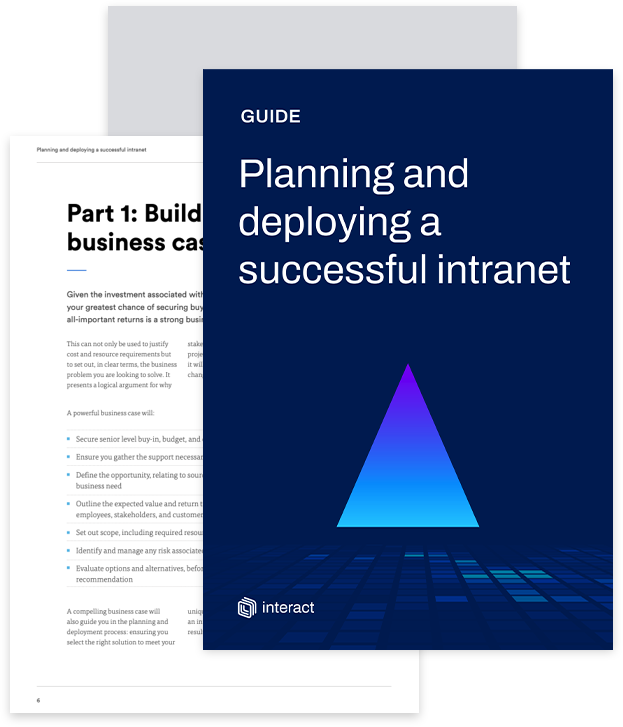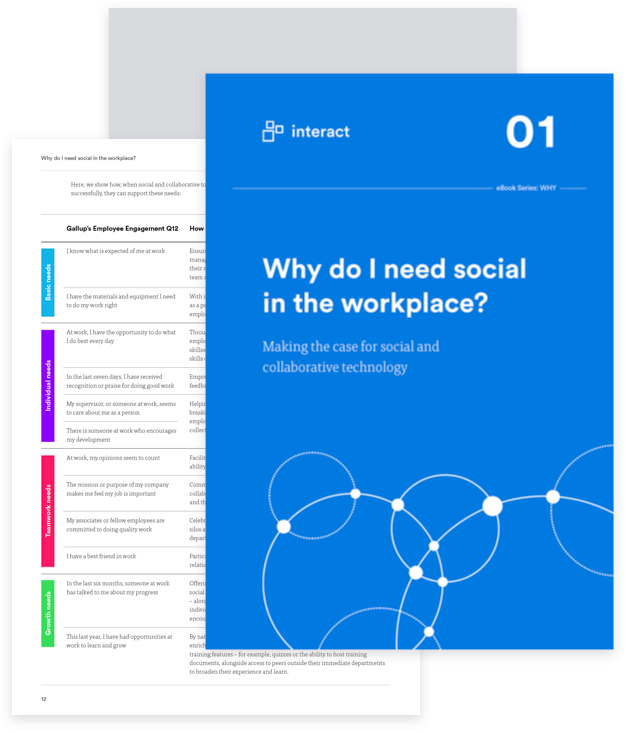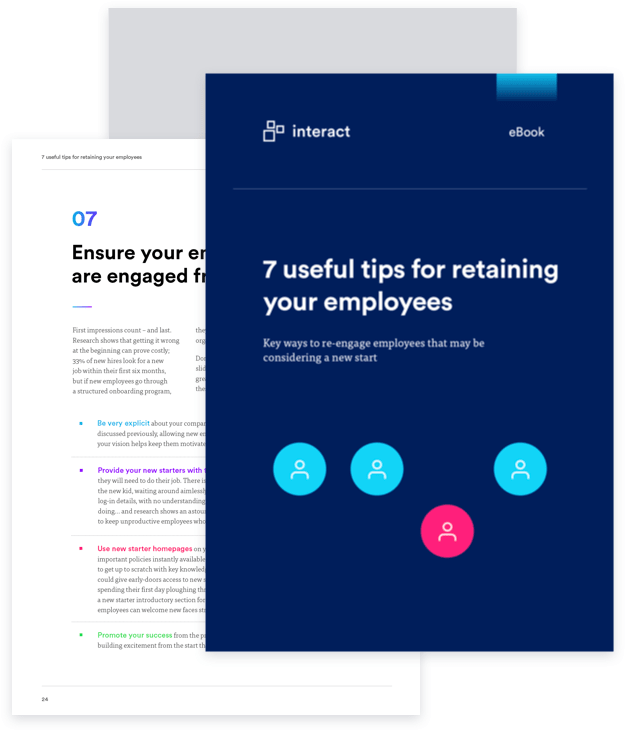Working moms: 4 ways your intranet can support new and expecting mothers in the workplace

There are about 25.1 million mothers in today’s workplace – are they receiving all the support they need?
Motherhood has significantly evolved since the celebration of the first Mother’s Day in 1914. While President Woodrow Wilson was able to recognize and reward all the work that mothers do in raising their children, many companies struggle to do the same. Unlike the traditional role of women as stay-at-home moms and housewives, today’s mothers reside in the labor force.
Often the breadwinners of the family, today’s women are educated, hard-working, and are increasingly being recognized as such – Mostly. Although organizations have begun to push for more diversity and gender equality, they still struggle with equal treatment of expecting and new mothers.
History and old age principles have left the caretaking of the family in the hands of the mother. Even with feminists and progressive thinkers trying to change the dialogue, the ideal stands strong. Women are discouraged from having multiple alliances. Instead, it becomes work vs. family – an unfair dilemma.
Mothers in the workplace
Women are model workers, as capable as the men they work alongside — a detail proven by the fact that they make up almost half of the US workforce. However, once women become pregnant, organizations begin to view them in a different light.

No longer are they the strong, reliable employee. Instead, they become the burden. The woman who has to take off too many days for appointments or is on leave for nine months. Knowing that failing to offer up fundamental rights like maternity leave falls under discrimination, organizations use other means to express their resentments and viewpoints on mothers in the workforce. (Laws like the Pregnancy Discrimination Act and Title VII of the Civil Rights Act are meant to prevent this type of bias.)
Since the beginning of time women have faced a lot of pressure to be involved mothers. Unfortunately, the increase in educated women and the growing ranks of stay-at-home dads have done little to change that. Roughly eight-in-ten adults (77%) say women face a lot of pressure to be an involved parent; a significantly smaller share (56%) means the same about men. (PewResearch)
This pressure places an unfair expectation on mothers. These moms are required to meet crazy deadlines and be available for meetings, yet they must also take the kids to school, handle housework, and still somehow make every parent-teacher conference. It does not help that male partners or organizations are not expected to help maintain this growing pile of impossibilities. With a lack of support on all ends, mothers grow frustrated, burned out before they even get to experience the wonders of motherhood.
Rather than deal with all the stress, 64% of women decide to leave the workforce before they have their child.
A mom-friendly intranet
Whether pregnant or a new returning mom, women face tremendous challenges while trying to manage or re-integrate into the workplace. The agenda for working moms, though different for every woman, is made up of a few expected components, including:
- Heavy use of PTO days to attend appointments during pregnancy or while suffering the unavoidable sick days
- Severe sleep deprivation from juggling day to day deadlines and projects while on 24/7 baby duty
- Playing catch up with new policies, new employees and new company protocols
- An extensive child care plan that involves baby sitters or begging colleagues for coverage early mornings or evenings.
- A complete upheaval of their schedule, leaving very little time for social gatherings.
A social intranet can work to effectively counteract these effects, providing some of the reasonable accommodations many mothers need to maintain their jobs and their homes. An intranet can support and perform numerous tasks required for moms in the digital workplace to gain some much-needed stability.
Download the essential intranet guide today
Get mothers up to date
Moms in the workplace are bound to miss out on some office days, whether it be a couple of days or months. Many women have an idea of what to expect when returning to the workplace but the reality can be more jarring than they realize. Suddenly, the manager of your department is completely different, and Bill is sitting at Martha from accounting’s desk.
Mothers are accustomed to change, having spent nine months with an ever-changing body and more years of new experiences looming ahead. However, in the workplace the transition is rarely that smooth and, without organizational support, it can be intolerable.
In a recent survey on motherhood in America, (30%) of mothers claimed to be dissatisfied with their coaching/guidance about returning to work. Uninformed and unaware of new developments, your mothers have little chance to return to being a highly productive team member. Improving communications and knowledge sharing is imperative, and an intranet is a perfect well of information waiting to be consumed.

Enterprise search functionality features put relevant information into working moms’ hands by offering a comprehensive search across intranet content. Homepages can be utilizedfor returning mothers much in the same way they are for new hires, hosting must-know content.
The speed and ease that users can access information gives hours of searching and wasted time back to these moms. They no longer need to feel like a stranger in their office with features like People Directories. Finding the right person or expert becomes as easy as snapping your fingers. An intranet can be an essential tool in getting moms back up to date and pushing them toward success rather than failure.
Put mothers back in the loop
Women who have mastered the first steps to motherhood and are excited to return to work often are shocked to find that they are outcasted. Almost like a pariah, your happy hour partners are suddenly too busy or worse, they’ve already assumed you were. Nights consist of running home to relieve the baby sitter rather than team building exercises. Seemingly frivolous, social moments like these, or lack thereof can have a severe effect on a mothers career momentum, especially for mother’s returning after weeks of leave.
Thankfully, intranets and their relationship with social technology mean that the social aspect of the workplace isn’t lost forever. In fact, with a mobile and intuitive system, it doesn’t have to falter at all. The ability to take your mobile intranet on the go means that mothers who aren’t in the office can still participate in some of the more collective aspects of work life.
Why do I need social in the workplace?
Intranet forums and the ability to like, share and comment on posts ensures that mothers never have to miss out on the new inside joke. Timelines and @mentions can draw attention to a new policy or highlight the fact that a colleague just celebrated a ten year anniversary. Colleagues are even able to recognize and shout out staff, whether they are in the office or not. Interact’s reward feature allows employees to recognize and share success. Mothers can show their appreciation for their colleagues or even earn some much-deserved rewards themselves.
Working moms shouldn’t have to miss out on any of the fun moments. With your intranet as the social bridge, free and secure communication across departments, offices, and timezones is fully possible and encouraged.
Give mothers more flexibility
To protect the health of a woman and her child, adjustments need to be made. New mothers need the support of their partners and organization during this transitional time to develop a method of work that upkeeps their new way of life. But what if they do not receive it?
“Across women who returned to work, 23% felt unsupported by their employer’s postpartum schedule flexibility, and almost half (43%) of women who left their job felt that their employer could have done things differently to keep them in the workforce, such as providing support via flexibility.”
Mothers who don’t receive the appropriate accommodations from employers are forced to work two times harder to maintain the balance between motherhood and work. Increasingly more and more complicated, the struggle inevitably results in moms leaving the workforce after giving birth. Flexible scheduling, breaks, and frequent time off for appointments are some of the top requests mothers have. Yet, among these women, more than one in four (26 percent) did not ask their employers for it. (Childbirth Connection Survey)
You don’t need to be in the office to be productive. Create an environment where employees aren’t afraid to ask for what they need. An intranet can act as a powerful tool to support a mother’s need for flexibility. Having a mobile version of the tradition desktop application can give those mothers who are always on the go access to all the information they need. Contacting them with relevant updates can be done and tracked with our Broadcasts feature, via SMS, push motivations and more.
Interact’s mobile app gives employees access to your digital workplace from any device. With these capabilities, managers should have no trouble providing flexibility and no question of a working moms ability to complete her duties.
Encourage more understanding
Lack of understanding is a driving force behind the deficient support for working moms. Among all the societal pressures and hardships of motherhood, many individuals still don’t understand the weight that working mothers carry. Ignorance in how to best handle working moms creates an unspoken rule: avoid talking about how things have changed. Managers that adopt this mentality then fail to realize the systematic bias forming under the guise of “helping”

Mothers can experience several biased situations:
- Managers expect mothers to immediately return to the exact level of availability and productivity they had before. This often leads to them denying certain levels of flexibility, placing unneeded pressure on moms or questioning their abilities to meet role specific requirements
- Managers being “overly” sympathetic. Managers will limit workload without warning or withhold invitations or company events or client meeting with the impression that they’re understanding or courteous.
This behavior appears designed to hurt new moms, pushing women out their roles with either tough love or over protection.
More than one in four of women who had resumed work with the same pre-birth employer reported experiencing bias from their employers due to perceptions of their “desire, ability, or commitment” to doing their jobs. (Childbirth Connections)
The key to breaking these biases is to establish a culture of communication. Check-in with mothers to define what they feel comfortable picking back up or what they need to eliminate. Managers may feel uncomfortable having these conversations, unsure of what is permissible to say. An intranet can provide managers with the tools to best off and onboard mothers returning from leave.
Forums can break down traditional one-way communication, allowing mothers to share what they need with management. Leaders can also use Discussion or idea forums as a form of gender bias training. Mothers sharing their stories via the intranet will generate a broader understanding of their plight as working moms.
Keeping mothers on board
What working mothers want is the same equality and support that others are afforded. The workforce is evolving to involve a larger percentage of women. Its policies and tools should also involve to provide them with the best employee experience possible.
Organizations can receive a higher return on investment by training managers to communicate with working moms and educating staff. Ensuring high retention of working moms is as simple as providing encouragement, understanding, and the adaptability they need.



